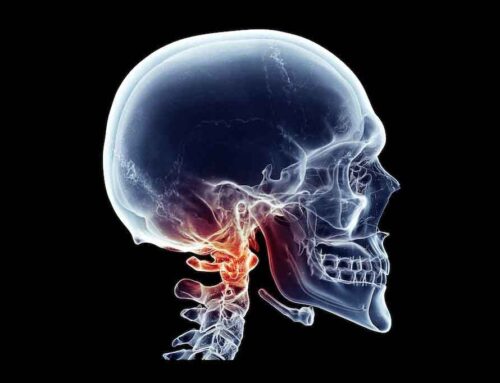Blair Upper Cervical vs. Full Spine Chiropractic
“I’ve tried Chiropractic. It works for a while but I have to keep going back, I felt better for a while but my adjustments just don’t last”
Does this sound familiar? Well, I heard it over and over again from my patients. I was trained traditionally at my chiropractic college. Our office would examine and then take full spine x rays our patients. From the base of the spine all the way to the skull, we would note any misalignments, and adjust every one of those segments on every visit. Week after week, after week, after week, we would adjust our patients. They would feel better for a while but ultimately they would feel out of alignment. This was not only frustrating for our patients, but it put doubt in my mind, the doctor, as to the effectiveness of the care I was providing. I considered myself an excellent adjuster, so why wouldn’t the spine stay aligned?
The Secret Lies in the Atlas – The Top Bone in the Neck
A colleague that I stayed in close contact with since Chiropractic College called me all excited one day. It turns out he had just returned from a conference that weekend and one of the presenters spoke about a concept of chiropractic that he and I had not been exposed to in our training. He too had been frustrated with the care he was delivering to his patients. He said, “This is what we have been looking for, the missing piece of the puzzle that could allow our patient’s spines to stay in alignment for long periods of time.” See we had been instructed to level out the base of the spine. If the base or foundation was level, the rest of the vertebrae would stack up straight. This led us to analyzing and adjusting the pelvis as well as having our patients adding heel lifts inside of their shoes. Like carpenter shims! My chiropractor friend said the presenter said this approach could not have been any farther from the truth. The key to keeping the entire spine in alignment was controlled by one bone; the top bone in the next, the first cervical vertebrae, known as the atlas. It is so different it has its own name. Anatomically, the joints between the atlas and the skull, which sits on it, are formed different than all the other spinal joints. The joints are formed flatter which allows for a tremendous amount of movement. All the other joints in the spine are built with vertical joints which form a boney locking mechanism. These joints move a little, but not enough where the bones could move onto the nerves that exit between the vertebrae. If enough force or trauma is put into the upper neck, the atlas can misalign and lock out of place. Because it can move more freely the atlas moves into the cord space. The atlas surrounds and protects the top of the spinal cord area known as the medulla oblongata. The medulla oblongata contains approximately 10 billion nerve tracts. These nerve pathways control almost all of our involuntary responses and most importantly for this discussion, the involuntary muscles all the way down the spine.
The Domino Effect
When the atlas misaligns it tilts the head to one side or the other. The brain has a reflex that will always keep the eyes level with the horizon. So, if the atlas tilts the head to one side and the brain over rides that with leveling the eyes, something has to give. Well, the shoulder drops on one side and to counter balance the shift, the brain pulls the hip up on the same side. When the atlas is off the entire spine compensates. The joints in the neck, middle and lower back become restricted, sore and inflamed. In fact, if the problem is left untreated, certain joints of the spine will degenerate. With full spine adjusting, we were able to put motion into the compensating joints so they moved freely for a time, but because the atlas was not corrected the spine kept returning to the wrong position.
Blair Upper Cervical Chiropractic
Emphasis on the atlas area is not new to chiropractic. In fact Upper Cervical Chiropractic was all that was taught at the first chiropractic college for a long period of time. It fell out of favor when chiropractic adopted a more medical model. Dr. William Blair, was trained and skilled Upper Cervical Chiropractor. He was precise and meticulous with care given to his patients. After years of practice he came to the conclusion that a percentage of his patients would hold their atlas adjustments for long periods of time. The unsettling realization was that an even larger percentage of patients could not hold their alignment. This was disturbing to Dr. Blair. All patients received the same meticulous care, yet some responded better. Why? Dr. Blair took a sabbatical from his practice in Lubbock, Texas and returned to Palmer College of Chiropractic to perform research. Palmer College at the time had one of the largest collections of human spines in the world. After extensive study of the human specimens, Dr. Blair was convinced that a very crucial detail was being overlooked when it came down to the analysis of the x rays of the skull and atlas area. Like a fingerprint, all individuals possess a unique, and very unpredictable, anatomical bone and joint structure in the area of the skull and atlas. The assumption that the left and right joints were formed exactly the same in every individual was why some adjustments worked, but most did not. Dr. Blair discovered that if the atlas moves in one direction, it must move in three directions. This revelation is what led Dr. Blair to the invention of a new and different type of x-rays and ultimately a different type of adjustment for atlas misalignments.
Holding is Healing
Patients receive the Blair X-ray Series to assist us in evaluating their exact anatomy including, convergence, slope and convexity angles of the skull/atlas joints on each side. When the joint angles are calculated then 2 protractoviews can be taken to visualize the exact misalignment. Now we are equipped with the exact combination to unlock the joint. Like a combination lock on your gym locker, if you know the combination, it takes very little effort to open. If you don’t have the right combination it may never open. That is exactly what Dr. Blair found out with his patients and what we experience with our patients today. When we are working with this information from the start, the exact adjustment will unlock the joint and this frees up the space for the nerves that naturally control our alignment. Your brain will never forget what is best for the rest of the body. The involuntary muscles throughout the entire spine begin to balance and each vertebra, top to bottom, will pull back into alignment. The longer you hold your atlas adjustment the faster the realigning process will occur.



